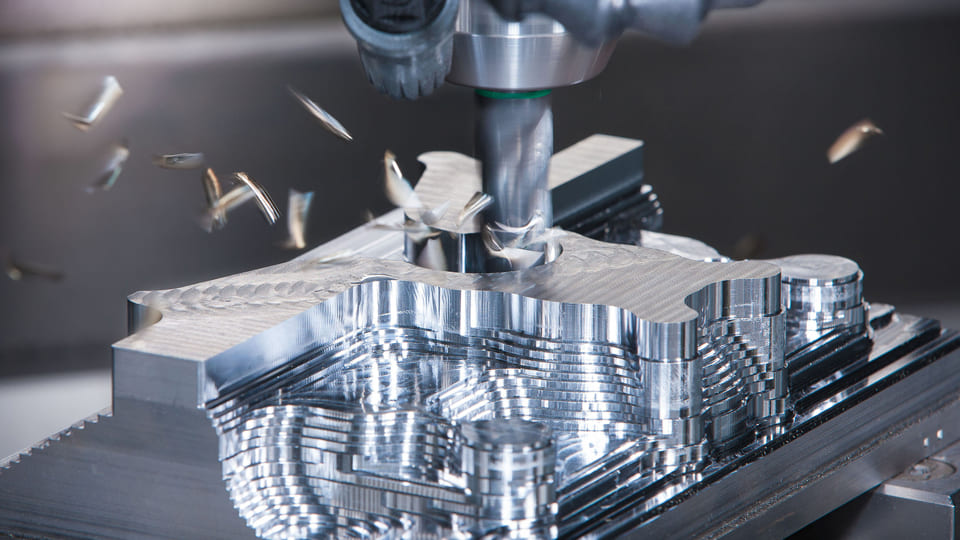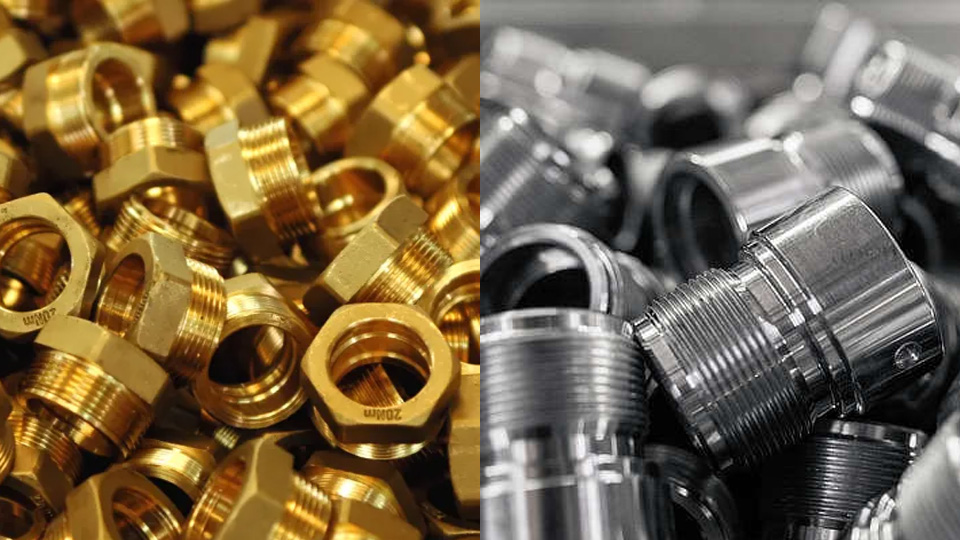If you’re stepping into the world of manufacturing, CNC milling is a crucial process to understand. Computer Numerical Control (CNC) milling combines technology, craftsmanship, and precision to shape raw materials into intricate parts. In this comprehensive guide for beginners, we’ll explore everything you need to know about CNC milling.
What Is CNC Milling?
CNC milling is a subtractive manufacturing process that uses computer-controlled machinery to remove material from a workpiece, resulting in the creation of precise and complex parts. These computerized machines, equipped with cutting tools, follow a pre-programmed set of instructions to shape and carve materials.
Process of CNC Milling
CNC milling operates through a series of precise steps:
Design for CNC milling project: First, the desired part is designed using Computer-Aided Design (CAD) software, creating a 3D model. CAD allows for detailed and accurate part design.
Programming: The CAD design is converted into a CNC program using Computer-Aided Manufacturing (CAM) software. This program contains instructions for toolpaths, cutting speeds, feeds, and other machining parameters.
Machine Setup: The workpiece, typically a raw material such as metal, plastic, or wood, is secured to the machine’s worktable using various workholding devices, ensuring it remains stable during the milling process.
Execution: The CNC milling machine reads the CNC program and follows the instructions. The cutting tool, often an end mill or ball mill, removes material from the workpiece, shaping it as per the design.
Types of CNC Milling Machines
CNC milling machines offer remarkable versatility and can perform a wide array of cutting and machining tasks. Typically, the workpiece remains fixed in place, while the cutting tool, in a combination of movement and rotation, precisely removes material to bring the intended design to life. The specific spindle configurations of CNC milling machines can vary, dictating how they secure and manipulate the workpiece during the machining process.
Vertical CNC Milling
Vertical CNC milling is a machining process in which a vertically oriented spindle with cutting tools removes material from a workpiece. In vertical CNC milling, the workpiece is secured on a table, while the cutting tools, mounted on a spindle, move vertically to cut, shape, and engrave the material.

structure of vertical CNC milling machines
Horizontal CNC Milling
Horizontal CNC milling is a machining process where the spindle with cutting tools is oriented horizontally, parallel to the worktable. In this method, the workpiece is typically clamped on the table and moves along the X and Y axes, while the spindle moves along the Z-axis.

structure of horizontal CNC milling machines
Multi-Axis CNC Milling
Multi-axis CNC milling refers to the use of computer numerical control (CNC) milling machines equipped with more than the standard three axes (X, Y, and Z). These machines are capable of precise and complex machining operations, as they can move the cutting tool along additional rotational and tilt axes. The most common multi-axis configurations include 4-axis and 5-axis milling machines.
4-Axis CNC Milling: In 4-axis CNC milling, the cutting tool can move along the X, Y, and Z axes, as well as rotate around another axis, typically the A-axis. This additional rotational capability allows for the machining of features from multiple angles, making it suitable for applications such as aerospace and complex part production.
5-Axis CNC Milling: A 5-axis CNC milling machine adds another degree of freedom, typically a rotary B-axis, to the 4-axis setup. This allows the tool to tilt or pivot, providing even greater flexibility in machining complex shapes and contours.

5-Axis CNC milling machines
CNC Milling Operations
Plain milling: Plain milling, also known as surface milling, is a fundamental type of milling operation. It involves the removal of material from the surface of a workpiece using a milling cutter with multiple teeth or cutting edges. The cutter moves in a linear path along the workpiece surface to create a flat and smooth surface.
Angular Milling: Angular milling is a milling operation that involves cutting at an angle to the axis of the milling machine spindle. It’s often used to create bevels, chamfers, and angular features on workpieces. Angular milling requires the use of a specialized angular milling cutter or the adjustment of the workpiece’s orientation to the desired angle.
Form Milling: Form milling, also known as contour milling, is a versatile milling operation used to create intricate and non-linear shapes on the workpiece. In form milling, the cutter path follows a specific contour or template, reproducing the desired shape on the workpiece surface. This method is particularly useful for producing complex and custom shapes.
Profile Milling: Profile milling is used to machine complex shapes or profiles on the workpiece. The cutting tool follows a predetermined path to replicate the desired profile accurately. It’s ideal for creating intricate parts with tight tolerances.
Face Milling: Face milling involves removing material from the face of the workpiece using a large-diameter cutting tool. It’s used to create flat surfaces, and it can be used for roughing or finishing operations.
Gang milling: a milling operation that involves multiple cutters (typically two or more) mounted on a single arbor and operating simultaneously on a workpiece.

Common Materials for CNC Milling
CNC milling can work with various materials, depending on the application and requirements:
Metals for CNC Milling
Aluminum: Lightweight and corrosion-resistant, widely used in aerospace and automotive industries.
Steel: Known for its strength and durability, used in construction, machinery, and more.
Stainless Steel: Offers corrosion resistance, often employed in medical devices and food processing equipment.
Brass: Combines corrosion resistance and an attractive appearance, used in electrical and plumbing applications.
Copper: Excellent conductor of electricity and heat, used in electrical components and heat exchangers.
Titanium: High strength-to-weight ratio and corrosion resistance, found in aerospace, medical, and marine applications.
Magnesium: Lightweight with good heat dissipation properties, used in aerospace and automotive components.
Plastics for CNC Milling
ABS: Good impact resistance and strength.
PC: High impact resistance and optical clarity.
Nylon: High tensile strength and durability.
PE: Low friction and chemical resistance.
PP: Lightweight and chemical resistance.
POM: High strength and low friction.
PVC: Versatile and lightweight.
PTFE: chemical resistance and electrical insulation.
PET: Transparent and lightweight.
Acrylic (PMMA): Transparent and weather-resistant.
PEEK: High-temperature and chemical resistance.
Pros of CNC milling
Precision and Accuracy: CNC milling machines are known for their exceptional precision and accuracy. They can consistently produce parts with tight tolerances, making them suitable for critical applications.
Wide selection of materials: CNC milling machines can effortlessly work with an array of materials, spanning metals, plastics, composites, and more. This versatility empowers industries to tailor their material choices to precise application requirements, whether it’s the strength of metals or the lightweight properties of plastics.
Fast and efficient: CNC milling is a high-speed and automated machining process that optimizes production in various industries. With computer-controlled precision, CNC milling machines execute operations with minimal manual intervention, reducing labor hours and accelerating production. Their ability to maintain consistent cutting speeds and feed rates, coupled with the capability to perform complex multi-axis movements, results in reduced cycle times, shorter lead times, and increased overall productivity. Additionally, tool changes and workpiece setup can be streamlined, further enhancing efficiency. This speed and efficiency make CNC milling a cornerstone of modern manufacturing, ensuring the swift and cost-effective production of high-quality components and prototypes.
Cons of CNC milling
Initial Investment: CNC milling machines can be expensive to purchase and maintain, making it a significant capital investment.
Materials wastage: CNC milling, as a subtractive manufacturing method, stems from the process of removing material from a workpiece to achieve the desired shape and features. This approach inherently generates excess material waste, often in the form of chips, swarf, or leftover stock material. Reducing waste in CNC milling involves optimizing cutting tool paths and feed rates, as well as minimizing over-cutting, to ensure efficient material removal and resource conservation.
Skilled labor shortages: While CNC machines automate many tasks, they still require skilled operators and programmers to set up and maintain the equipment so that high-quality parts are always produced. With the increasing demand for precision machining, there is a growing gap between the need for highly skilled CNC machinists and the availability of qualified personnel. As a result, many machine shops can not boast of highly qualified CNC mill operators.
Applications of CNC Milling
CNC milling is a versatile machining process used in a wide range of applications across various industries. Here are some common applications of CNC milling:
Aerospace: CNC milling is used to manufacture precision aerospace components, such as aircraft parts, turbine blades, and structural components, which demand high-quality and tight tolerances.
Automotive: CNC milling is integral to producing engine components, transmission parts, suspension components, and molds for automotive manufacturing.
Medical: The medical industry uses CNC milling to produce orthopedic implants, surgical instruments, and custom medical devices that require precision and biocompatible materials.
Electronics: CNC milling is used to create custom enclosures, heatsinks, and PCB (printed circuit board) prototypes for electronic devices.
Prototyping: CNC milling is a preferred method for rapid prototyping of product designs and functional prototypes.
Custom Parts Manufacturing: CNC milling offers flexibility in producing custom and low-volume parts across various industries, from consumer goods to industrial equipment.
Summary
This article has introduced CNC milling, explained what it is and how it works, and listed different CNC milling machines, materials, Pros and Cons, and industrial applications. For in-depth knowledge and further insights into CNC milling, feel free to get in touch with SogaWorks.
SogaWorks offers extensive manufacturing capabilities, including CNC machining and other exceptional manufacturing services to address your prototyping and production needs. Check out our official website and get an instant, hassle-free quote.






